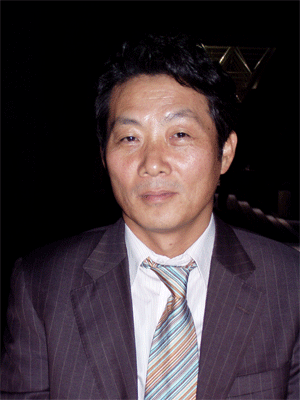
우리학교 농업경제학과를 졸업한 윤인모 동문이 바로 그 주인공이다. 그가 생각한 이 채널전략은 당시 LG홈쇼핑 매출을 끌어올리는 데에 큰 몫을 했으며 전반적인 홈쇼핑 사업 발전에 큰 원동력이 됐다.
“번뜩이는 아이디어는 백지상태의 머리에서 나오는 것이 아니라 항상 고민하고 관심을 가져야 떠오를 수 있는 것이지요”라고 말하는 윤 동문. 그런 그의 좌우명 역시 항상 새로운 것을 찾자는 뜻의 ‘일일신 우일신(日日新 又日新)’이다. 윤 동문은 일에서 제일 중요한 것은 창의력과 새로운 것에 대해 수용하고 이해할 수 있는 능력이라며 “물론 모든 게 사람이 하는 일인 만큼, 성실과 진실이 그 밑바탕에 깔려있어야 하겠지만요”라고 덧붙인다.
대학시절 그에게 1년간의 교내방송국 아나운서 활동은 방송 매체에 대한 열정을 갖게 했다. 한 때는 아나운서의 꿈을 갖고 열심히 공부했지만, 교육학 석사과정과 10년간의 직장생활은 방송과는 별 관련 없이 흘러갔다.
하지만 93년 케이블 TV가 태동할 즈음, 홈쇼핑 업계에 입문하면서 방송에 대한 열정을 다시 찾게 됐다. 윤 동문은 “잠들어 있던 방송에 대한 욕구를 나 자신이 잊지 않고 있었던 것 같아요”라고 말한다.
그는 자신이 하고 있는 일이 좋아하던 방송 관련 일이라는 점에 큰 기쁨을 느낀다고 한다. 초기에는 바쁜 일정 속에 일주일에 하루 정도 밖에 집에 갈 수가 없던 때도 있었다.
“아무리 힘들어도, 내가 뛰어다니고 노력하는 만큼 내 회사에 큰 성과를 가져다 줄 수 있다고 생각하면 그 피곤함까지 즐거워요”라는 말에서, 그가 진정으로 자신의 일을 사랑한다는 것을 알 수 있다.
윤인모 동문은 “사회에서는 홈쇼핑이라고 하는 것이 소비자를 기만하고 충동구매를 유도하는 매체라는 편견을 갖고 있기도 한데, 이 점이 가장 안타까워요”라며 “이에 다양한 상품, 질 높은 상품 등을 많이 선별해서 믿고 이용할 수 있는 홈쇼핑이 되게 하려고 끊임없이 노력할 겁니다”라고 말한다.
그는 후배들에게 “대학 시절에는 그저 공부에 매여 있기보다는 즐겨라”라고 조언한다. 이 때 즐긴다는 것은 흥청망청 노는 것이 아니라, 자신이 좋아하는 것을 찾아 그 분야에 대해 깊고 넓게 ‘탐구’하는 것을 의미한다. 자신의 관심사에 대해 집중하고 즐기는 것 자체가 미래에 대한 준비라는 윤인모 동문.
그런 윤 동문에게서 진정 자신이 좋아하는 일에 임하는 진짜 ‘프로’의 모습을 발견할 수 있다.
<현>
.

